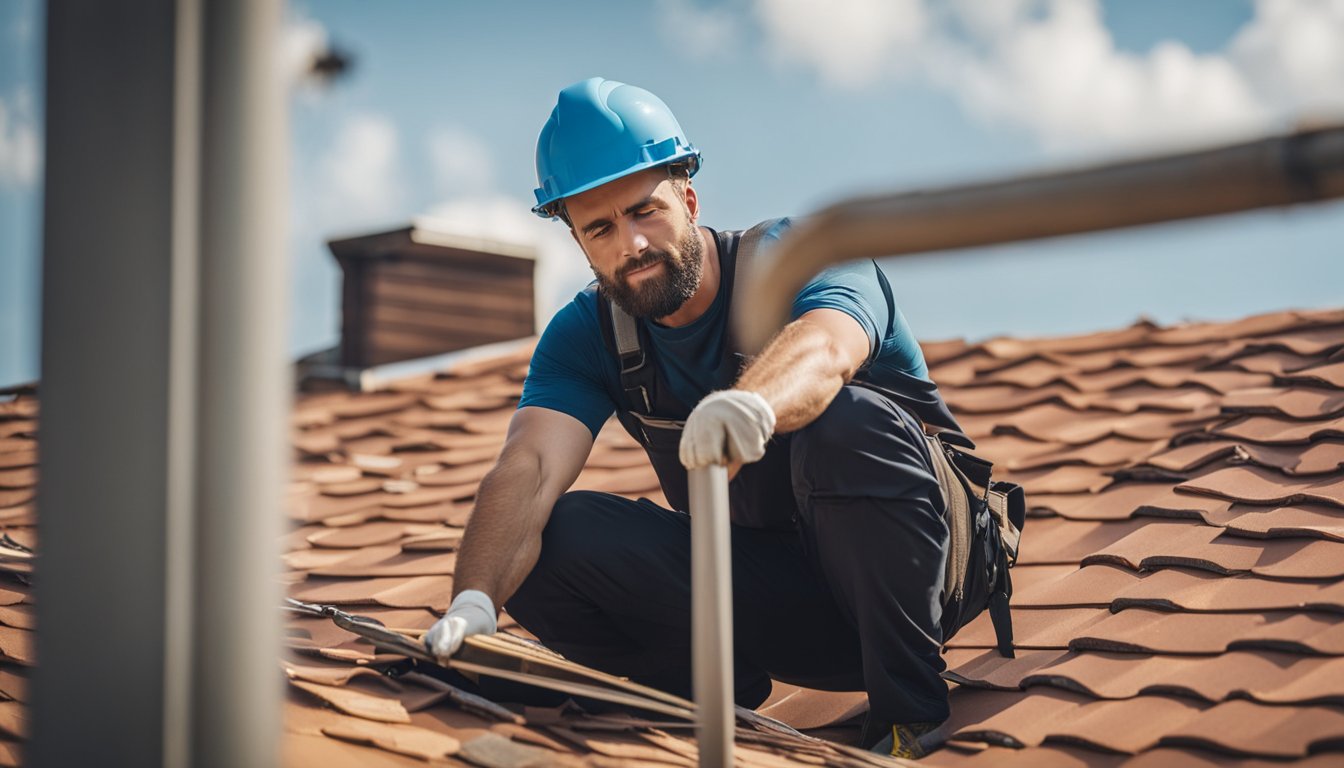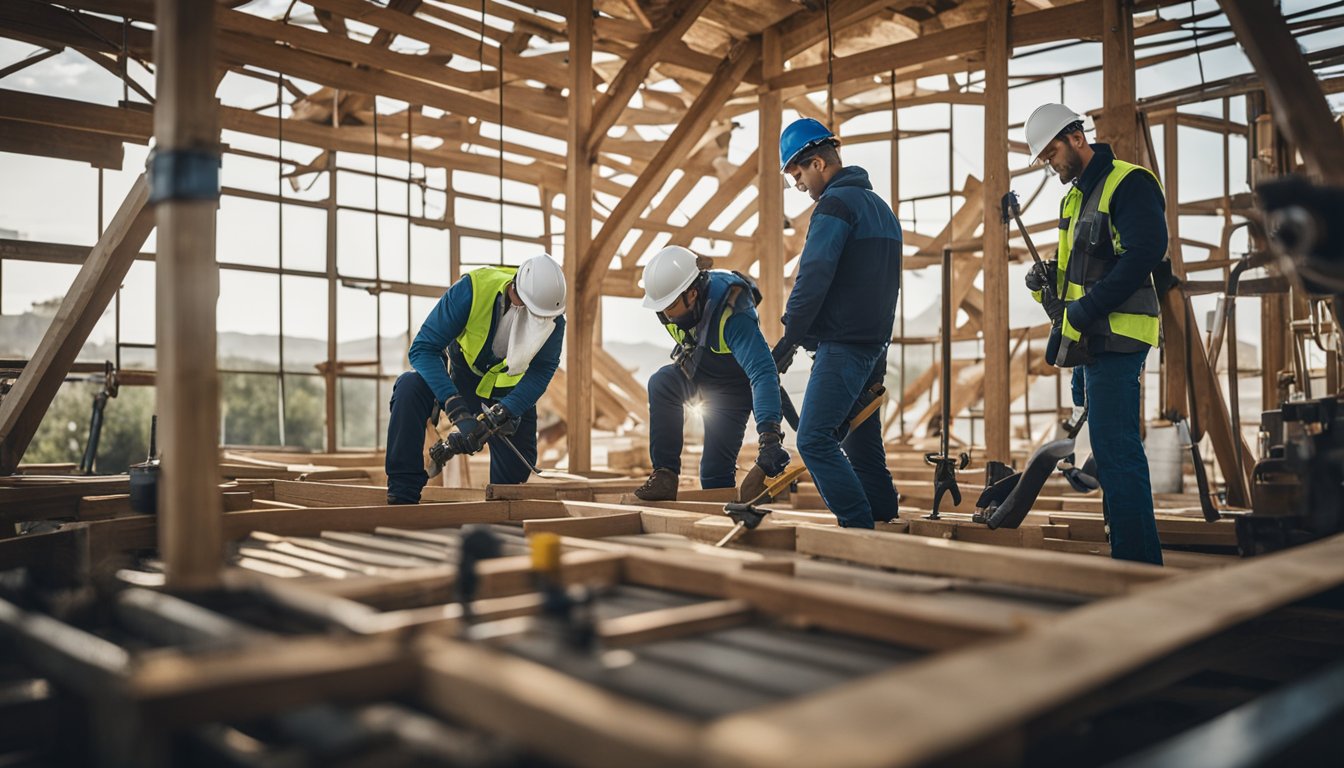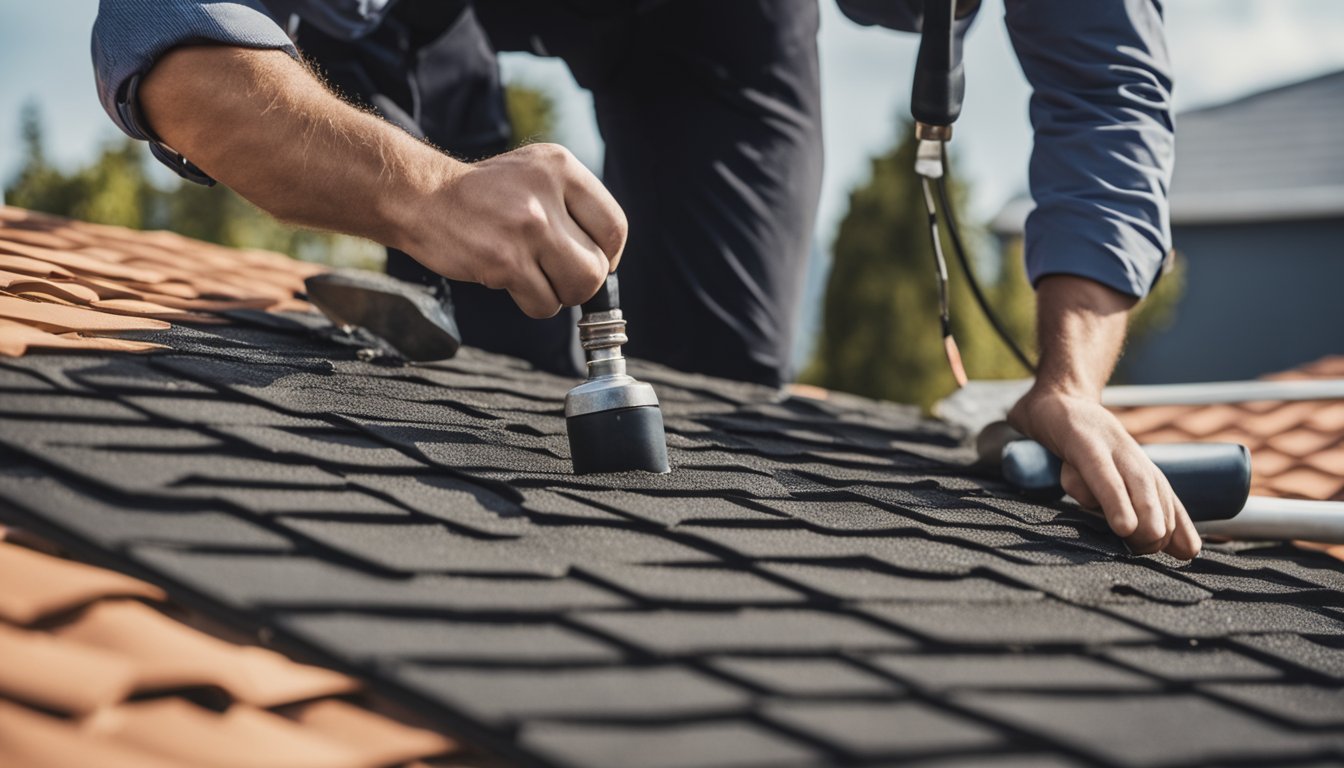Late updated: 31 Oct 2024 11:10
Written by: Oliver Bennett
Maximising Roof Longevity: Ensure Durability with Regular Maintenance
Enhancing the lifespan of a roof is far more than just a task for homeowners; it's a requirement for maintaining the health and safety of the entire property. As we explore strategies that bolster roof longevity, we realise that each small step in maintenance prevents larger issues and expensive repairs in the future. Regular maintenance is essential to ensure our roof not only lasts longer but also effectively protects our homes from the elements.

In our journey to maximise roof lifespan, regular inspections play a pivotal role. By identifying signs of wear or damage early, we can take action before problems escalate. This doesn't just protect the structural integrity of the roof but also maintains its aesthetic and curb appeal.
Moreover, simple practices such as clearing debris from gutters and trimming nearby trees help protect the roof structure. These efforts shield the roof from unwanted damage, ensuring it remains a sturdy guardian for our living spaces.
Key Takeaways
- Regular maintenance boosts roof longevity.
- Simple preventative measures can save on repairs.
- Early inspections help maintain structural integrity.
Establishing a Maintenance Routine
Maximising roof longevity involves establishing a comprehensive maintenance routine. This includes understanding roofing materials, conducting regular inspections, addressing common issues, and implementing cleaning and preventive measures. A proactive approach helps in preventing costly repairs and extending the lifespan of the roof.
Understanding Roofing Materials
Different roofing materials require varied maintenance strategies. Asphalt shingles, for instance, are durable but may need regular monitoring for cracks or missing pieces. Metal roofs typically resist corrosion, though periodic cleaning helps prevent surface wear. Flat roofs demand attention to avoid pooling water, which can lead to leaks. Understanding the unique needs of each material guides our maintenance efforts, ensuring each roof remains in optimal condition. Proper knowledge of roofing material affects durability, maintenance plans, and the frequency of routine actions.
Conducting Regular Inspections
Establishing a consistent inspection schedule is vital. We recommend professional roof inspections at least twice a year, ideally in spring and autumn. This helps identify issues like leaks, damaged flashing, or missing shingles before they worsen. Routine inspections should check for signs of corrosion on metal roofs, water damage, and potential structural damage. Professional inspections can also provide invaluable insights into the roof's condition, allowing for timely repairs. Regular inspections are crucial for preventing extensive damage and prolonging the roof's service life.
Addressing Common Issues
Prompt attention to common problems can prevent costly repairs. Leaks are a primary concern; identifying their sources early helps avoid water damage and structural issues. We should also stay vigilant for visible damage, such as cracks or missing shingles, especially after severe weather. Addressing minor repairs swiftly halts further deterioration. In areas prone to moss or algae, applying preventive treatments can mitigate their spread. Sealant applications enhance waterproofing, ensuring a robust defence against the elements. Minor issues, if left unchecked, can escalate into major challenges, impacting the roof’s integrity and strength.
Cleaning and Preventive Measures
Regular cleaning is essential for maintaining roof health. Gutter cleaning prevents clogs, which can lead to water backup and ice dams in colder climates. We should ensure debris removal from the roof surface and clean downspouts to maintain proper drainage. Trimming overhanging branches minimizes the risk of falling debris and potential damage. Applying anti-moss solutions in damp areas can deter growth, prolonging the roof's appearance and functionality. Regular maintenance tips like these help avoid common issues and enhance roof durability, significantly contributing to its longevity.
Protecting the Roof Structure

To ensure the longevity of our roofs, maintaining the structural integrity is essential. This involves enhancing ventilation and insulation, being vigilant with seasonal and weather-related care, and planning for long-term upkeep. Each aspect plays a significant role in preventing structural damage and prolonging the roof's lifespan.
Enhancing Ventilation and Insulation
Proper ventilation and insulation are pivotal to maintaining a roof's durability. Attic ventilation helps regulate temperature, preventing heat and moisture build-up that can lead to structural damage. Installing vents or using existing ones effectively ensures air circulation. Insulation works hand in hand with ventilation by maintaining energy efficiency. It assists in reducing heat transfer and prevents ice dams in winter. Good insulation also minimises moisture damage, thus preserving the roof's structural integrity. Regular inspections by professional roofing contractors can help assess ventilation and insulation needs correctly.
Seasonal and Weather-Related Care
Seasonal maintenance is crucial for protecting our roof against weather extremes. During autumn, clearing debris accumulation like leaves and twigs helps prevent water pooling. In winter, snow and ice can cause significant stress and potential damage. Monitoring for signs of water ingress or leaks during heavy rain is essential in spring. These actions safeguard against moisture damage and roof repairs. Spring is ideal for checking for pests and any hidden damage from previous seasons. Collaborating with a roofing company for inspections and repairs ensures comprehensive care tailored to each season's challenges.
Planning for Long-Term Upkeep
Long-term maintenance planning is key to extending a roof's lifespan. This includes scheduling regular inspections and jotting down maintenance tips. A structured checklist to keep track of small issues can prevent them from escalating into major problems, potentially avoiding roof replacement. Regular roof cleaning further helps prevent algae and moss growth, which can degrade roofing materials. It's also crucial to have a rapport with a reliable professional roofing contractor for timely interventions. By being proactive, we enhance the roof's longevity and maintain its protective function over time.
Frequently Asked Questions

Regular roof maintenance is crucial for prolonging its life, ensuring energy efficiency, and preventing problems from escalating. Addressing common questions can help homeowners understand what maintenance tasks are necessary and how to spot signs of potential issues.
How can the lifespan of my roof be prolonged?
Regular inspections and timely repairs are essential. Ensuring proper ventilation and insulation is vital, as is removing debris and maintaining gutters. These practices help mitigate damage and extend the roof's life.
Is it true that cleaning the roof contributes to its longevity?
Yes, indeed. Cleaning helps prevent moss and algae build-up, which can lead to moisture retention and potential damage. Regular cleaning maintains the roof's integrity, particularly in areas prone to such growth.
What regular maintenance tasks are essential for roofs?
Inspecting for damage, clearing gutters, and checking for loose or missing shingles are necessary. Keeping an eye on attic conditions for any signs of moisture or leaks is also crucial. These tasks protect against small issues developing into significant problems.
What is the actual durability of a roof rated for 20 years?
A 20-year rated roof implies a potential lifespan under optimal conditions. With routine maintenance and prompt repairs, it may last longer. Yet, environmental factors like weather and installation quality can also impact durability.
Can frequent inspections prevent premature roof deterioration?
Frequent inspections play a vital role. Identifying minor issues early, such as leaks or damaged shingles, can prevent further deterioration. Timely intervention helps maintain the roof’s structural integrity.
What are the critical signs that a roof needs immediate maintenance?
Look for missing or damaged shingles, persistent leaks, and sagging areas. Moss or algae growth can indicate moisture retention. Noticing these signs early allows for prompt action and can safeguard against more extensive repairs.
